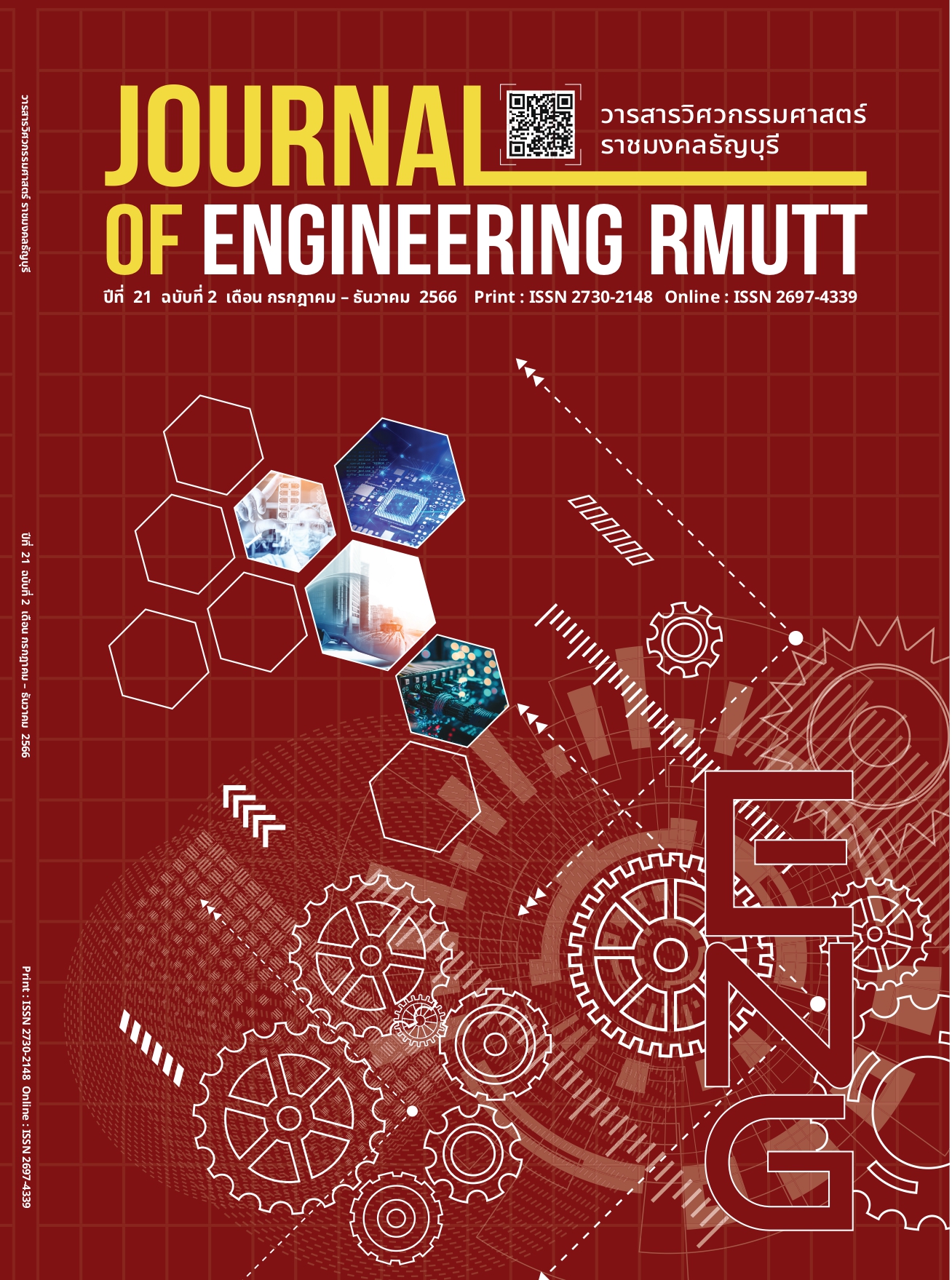Development of Particleboard from Durian Branch Waste for Adding Value to Agricultural Waste Material and Promoting Zero Waste Concept
Main Article Content
Abstract
This research aims to develop particleboard from durian (Monthong variety) branch waste for use as a decorative material. The ratio of durian branch waste to Polymeric Diphenyl Methane Diisocyanate (pMDI) was designed and edited into six ratios with varying amounts of pMDI. The particleboard samples were cast using heat at 150°C for 7 minutes and tested following TIS.876-2004 (particleboard product) standards. According to the results, the particleboards with a density of 600 kg/m3, 8% pMDI, and mixed durian wood chips (shaved wood chips and ground wood chips) were suitable for decoration work. The properties of the particleboard included a density of 597.25 kg/m3, 4.48% moisture, 5.34% thickness swelling, 6.05 MPa bending strength, 378.25 MPa elastic modulus, and 0.37 MPa tensile strength perpendicular to the surface. The developed particleboard from durian branch waste can add value and reduce the amount of agricultural waste left in durian orchards in accordance with the zero waste concept
Article Details

This work is licensed under a Creative Commons Attribution-NonCommercial-NoDerivatives 4.0 International License.
The manuscript, information, content, picture and so forth which were published on Frontiers in engineering innovation research has been a copyright of this journal only. There is not allow anyone or any organize to duplicate all content or some document for unethical publication.
References
Kerprasit, P., Weeranukul, P., Weeranukul, I., Suweero, K., & Muangprab , K. . Development of particleboard from northern black wattle tree bark for using as decorative materials. Journal of Engineering, RMUTT. 2021; 19(1):125–35. (in Thai)
Weeranukul P, Suweero K, Weeranukul I. Coconut coir ceiling board product with thermal insulation property. Journal of Engineering, RMUTT. 2018;16(2):129-38. (in Thai)
Office of Trade Policy and Strategy. Durian, the king of Thai fruits, foreigners like. Bangkok: Grassroots Economic Development Group, Division of Trade Strengthening Policy, Office of Trade Policy and Strategy; 2020. (in Thai)
Thai Industrial Standards Institute (TISI). Thai industrial standard no.876-2004: particleboard product. Bangkok: TISI; 2004. (in Thai)
Cheng X, He X, Xie J, Quan P, Xu K, Li X, Cai Z. Effect of the particle geometry and adhesive mass percentage on the physical and mechanical properties of particleboard made from peanut hull. Bio Resources. 2016;11(3):7271-81.
Nemli G, Örs Y, Kalaycıoğlu H. The choosing of suitable decorative surface coating material types for interior end use applications of particleboard. Construction and Building Materials. 2005;19(4): 307-12.
Yenjai P, Jarusombuti S, Veenin T. Particleboard manufacturing from waste of cajuput (Melaleuca cajuputi Powell). VRU Research and Development Journal Science and Technology. 2016;11(2):131-40. (in Thai)
Bledzki AK, Gassan J. Composites reinforced with cellulose based fibers. Progress in Polymer Science. 1999;24(2):221-74.
Lin CJS, Hiziroglu SMK, Lai HW. Manufacturing particleboard panels from betel palm (Areca catechu Linn.). Journal of materials processing technology. 2008;197(1-3):445-8.
Sekaluvu L, Tumutegyereize P, Kiggundu N. Investigation of factors affecting the production and properties of maize cob-particleboards. Waste Biomass Valor. 2014;5(1):27–32.
Hazrat BM, Zarea HH, Daliri SM, Abginechi Z, Hemmati A. Mechanical and insulating performances of ultralight thick particleboard from sugarcane residues and woods planer shaving. Eur. J. Wood Prod. 2016;74(2):161–8.
Faherty KF, Williamson TG. Wood Engineering and Construction Handbook. New York: McGraw-Hill, Inc.; 1995.


